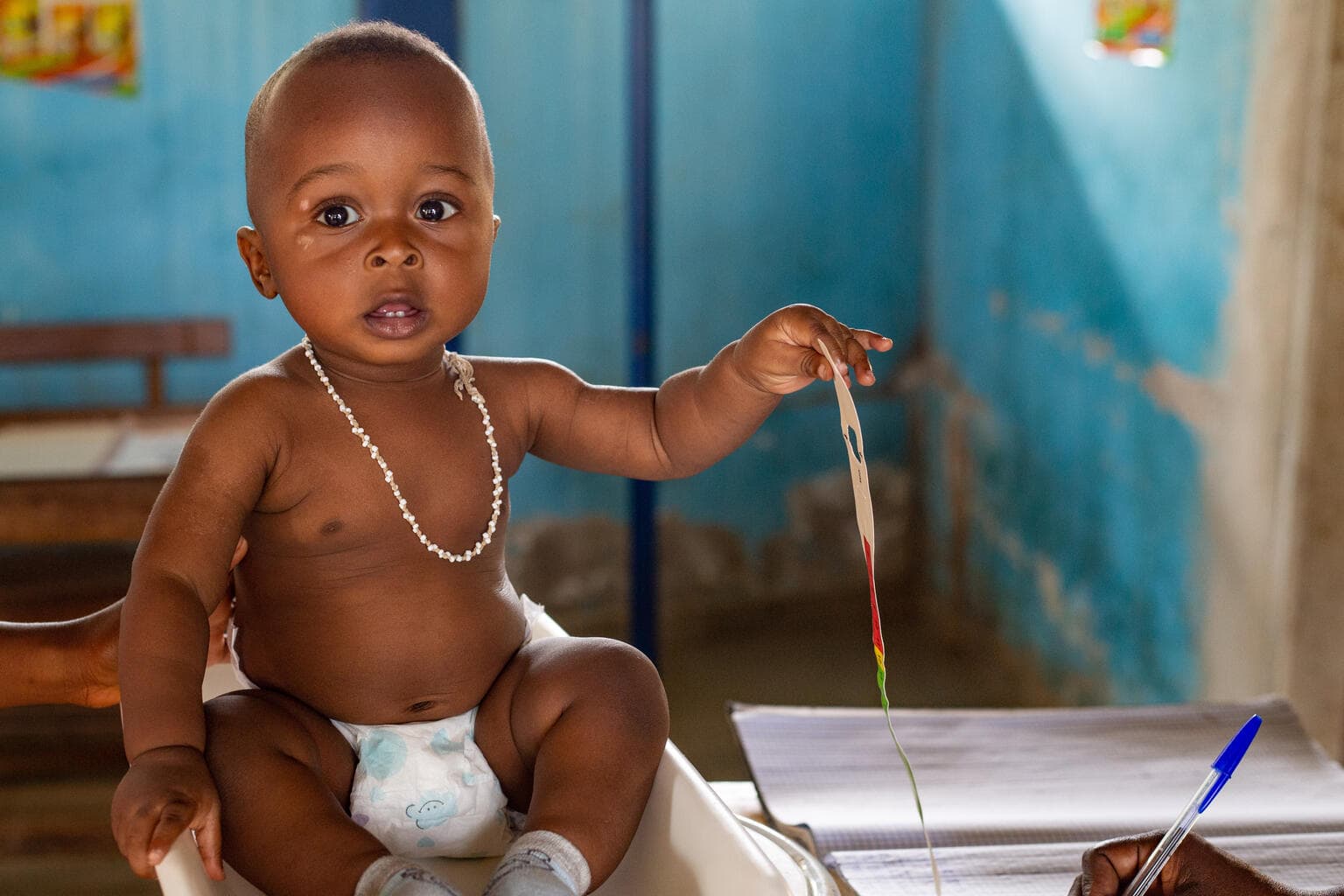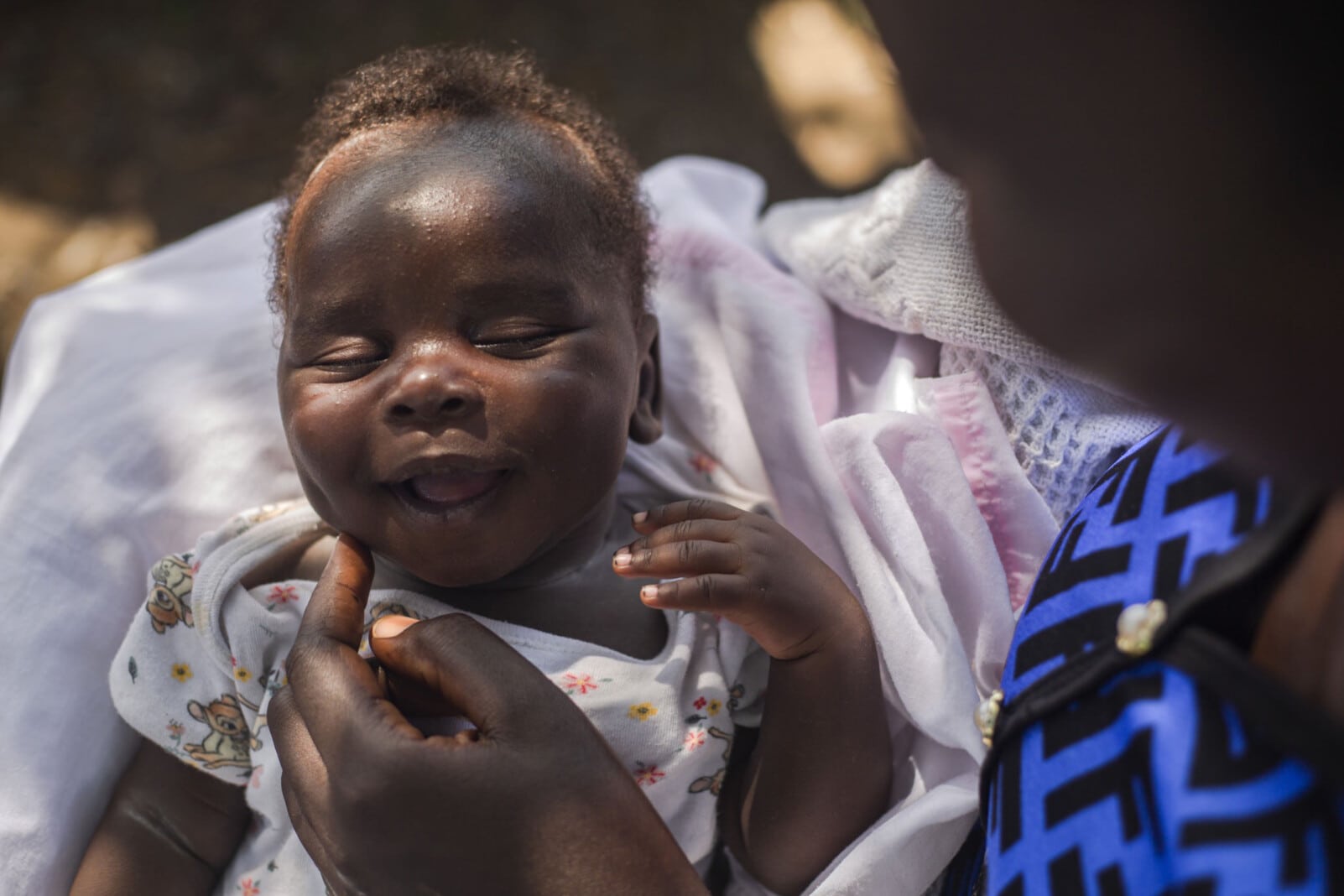Looking ahead: Child survival and the Sustainable Development Goals
In 2015, the world began working toward a new global development agenda, seeking to achieve, by 2030, new targets set out in the Sustainable Development Goals (SDGs). The proposed SDG target for child mortality aims to end, by 2030, preventable deaths of newborns and children under 5 years of age, with all countries aiming to reduce neonatal mortality to at least as low as 12 deaths per 1,000 live births and under-5 mortality to at least as low as 25 deaths per 1,000 live births.
In more than a quarter of all countries, urgent action is needed to accelerate reductions in child mortality to reach the SDG targets on ending preventable child deaths by 2030. Of 200 countries analysed, 134 already met the SDG target on under-five mortality, and 7 countries are expected to meet the target by 2030, if current trends continue. Efforts to accelerate progress need to be scaled up in the remaining 59 countries— roughly three quarters of which are in the region of Sub-Saharan Africa—to meet the SDG target on under-five mortality by 2030. Of these 59 countries, 43 countries will need to more than double their current rate of progress or reverse a recent increasing trend to achieve the SDG target by 2030.
Even more countries are at risk of missing the SDG target on neonatal mortality than on under-five mortality. On current trends, 64 countries will need to accelerate progress to meet the neonatal mortality target by 2030, while 57 countries will need to more than double their current rate of decline or reverse a recent increasing trend to meet the target on time.
Achieving the SDG target on under-five mortality on time in countries that are at risk of missing the target would mean averting almost 9 million under-five deaths compared with continuing current trends. If current trends continue (i.e. the country-level trends from 2010 to 2022), about 35 million children under 5 years of age will die before 2030, half of them newborns. Well over half of these deaths – 61 per cent – will take place in Sub-Saharan Africa (21 million), with another 23 per cent occurring in South Asia (8 million).
References:
The United Nations Inter-agency Group for Child Mortality Estimation (UN IGME), Levels and Trends in Child Mortality: Report 2023, UNICEF, New York, 2024.
Resources



Notes on the data
Definitions of indicators
Under-five mortality rate: Probability of dying between birth and exactly 5 years of age, expressed per 1,000 live births.
Infant mortality rate: Probability of dying between birth and exactly 1 year of age, expressed per 1,000 live births.
Neonatal mortality rate: Probability of dying during the first 28 days of life, expressed per 1,000 live births.
Probability of dying among children aged 5–14: Probability of dying at age 5–14 years expressed per 1,000 children aged 5.
Probability of dying among youth aged 15–24: Probability of dying at age 15–24 years expressed per 1,000 youth aged 15.
Probability of dying among adolescents aged 10–19: Probability of dying at age 15–24 years expressed per 1,000 youth aged 15.
Data sources and methodology
If each country had a single source of high-quality data covering the last few decades, reporting on child mortality levels and trends would be straightforward. But few countries do, and the limited availability of high-quality data over time for many countries makes generating accurate estimates of child mortality a considerable challenge.
Nationally representative estimates of child mortality can be derived from several sources, including civil registration, censuses and sample surveys. Demographic surveillance sites and hospital data are excluded because they are rarely nationally representative. The preferred source of data is a civil registration system that records births and deaths on a continuous basis, collects information as events occur and covers the entire population. If registration coverage is complete and the systems function efficiently, the resulting child mortality estimates will be accurate and timely. However, many countries remain without viable or fully functioning vital registration systems that accurately record all births and deaths—only around 60 countries have such systems. Therefore, household surveys, such as the UNICEF-supported Multiple Indicator Cluster Surveys and the US Agency for International Development–supported Demographic and Health Surveys, which ask women about the survival of their children, are the basis of child mortality estimates for most developing countries.
The United Nations Inter-agency Group for Child Mortality Estimation (UN IGME) seeks to compile all available national-level data on child mortality, including data from vital registration systems, population censuses, household surveys and sample registration systems. To estimate the under-five mortality trend series for each country, a statistical model is fitted to data points that meet quality standards established by IGME and then used to predict a trend line that is extrapolated to a defined common reference year. Infant mortality rates are generated by either applying a statistical model or transforming under-five mortality rates based on model life tables. Neonatal mortality rates are produced using a statistical model that uses national available data and estimated under-five mortality rates as input. Mortality rates among children aged 5–14 and youth aged 15-24 were produced by using a similar model as for under-five mortality. These methods provide a transparent and objective way of fitting a smoothed trend to a set of observations and of extrapolating the trend from the earliest available data point to the present. A more detailed explanation is available in the explanatory notes (available in Arabic, English, French, Spanish and Russian).
An overview on the methodology is available in this year’s UN IGME report.
A peer-reviewed collection of articles that makes a vital contribution to transparency on UN IGME’s methodology for child mortality estimation. Topics include: an overview of the child mortality estimation methodology developed by UN IGME, methods used to adjust for bias due to AIDS, estimation of sex differences in child mortality, and more. The collection was produced with support from UNICEF and the independent technical advisory group of IGME. Read more.
More details on the data used in deriving estimates are available in CME Info http://www.childmortality.org.
Key references
- For a detailed description of the B3 methodology, see Alkema, L. and New, J.R. (2014). ‘Global estimation of child mortality using a Bayesian B-spline bias-reduction method’, Annals of Applied Statistics, Vol. 8, No. 4, 2122-2149. Available at http://arxiv.org/abs/1309.1602 [PDF].
- Full details of the methodology used in the estimation of child mortality for 2015 are available in the PLOSMedicine Collection on Child Mortality Estimation methods (ploscollections.org/childmortalityestimation).
- For changes to methods used for the 2019 estimates, refer to this year’s report.
- Alkema, L. et al., ‘National, regional, and global sex ratios of infant, child, and under-5 mortality and identification of countries with outlying ratios: a systematic assessment’, The Lancet Global Health, vol. 2, 9, 1 September 2014, pp. e521-e530, DOI: 10.1016/S2214-109X(14)70280-3 Available at http://arxiv.org/abs/1309.1602
- Alexander, Monica, and Leontine Alkema, ‘Global Estimation of Neonatal Mortality Using a Bayesian Hierarchical Splines Regression Model’, Demographic Research, vol. 38, 2018, pp. 335–372.
- Hill, K., et al., Trends in Child Mortality in the Developing World: 1960-1996 [Full publication [zip].
- You, D. et al. Global, regional, and national levels and trends in under-5 mortality between 1990 and 2015, with scenario-based projections to 2030: a systematic analysis by the UN Inter-agency Group for Child Mortality Estimation. The Lancet. 2015; 386: 2275–2286.
